Come along on an 8-state tour through the core of pheasant range, see what's happening, then plan a late season hunt.
By Tom Carpenter and Joe Albert
Your dog is feeling it. So are your legs. The miles are adding up.
But pheasant seasons are still open. And there’s a lot of hunting yet to be done.
In this report, Pheasants Forever takes a tour through the core of pheasant range, looking at what’s been happening in the field so far and turning an eye toward the late season that is now upon us. If there’s a consensus here, it’s this: There are still roosters out there for the hunter willing to work a little bit, in part thanks to generally late corn harvests that helped many roosters evade early-season, fair-weather-only hunters.
There’s still time to plan a late-season excursion. Your dog is up for it. Are you?
COLORADO: GOOD HABITAT, GOOD BIRD NUMBERS, GOOD HUNTING
With crow counts that were the second-highest on record, and good habitat conditions across the state’s pheasant range, the mood is decidedly positive among Colorado’s rooster hunters.
“It’s been a really good season, and it’s going to be a great December and January in eastern Colorado,” said Bob Hix, and avid bird hunter and Pheasants Forever’s regional representative in Colorado and Wyoming. “It’s a good year to hunt in Colorado – there are plenty of birds.”
There was lots of corn standing when the state’s pheasant season opened the second weekend in November, but that’s all gone now. The one issue has been a lack of precipitation. While Colorado largely avoided the drought that gripped states including the Dakotas and Montana, there’s been precious little in the way of moisture to this point.
“Right now it’s really tough on the dogs,” Hix said. “It’s super-dry and they can’t smell the birds real well. Plus, it’s mid-season hunting so the birds are educated.”
Hix says things will improve even more as the snow falls, but there are things hunters can do until then (and even after the ground is covered in white): Hunt on one of the 200 pieces of land enrolled in the Corners for Conservation initiative. The state also has a strong walk-in access program, which allows hunters to access about 180,000 acres of private land.
“Try to look at these walk-in fields a little bit differently than everyone else looks at them,” Hix said. “Just make a simple change and mess with the birds a little bit.”
Northeast Colorado has the strongest pheasant populations in the state, with counties such as Kit Carson, Phillips, Sedgwick and Yuma leading the way. Populations aren’t as strong in southeastern Colorado, though they’re still good. And hunters who target that area of the state have the opportunity to kill both pheasants and quail.
Colorado’s pheasant season runs through Jan. 7, 2018, west of Interstate 25 and through Jan. 31, 2018, east of Interstate 25. The limit is 3 cocks.
Joe Albert
IOWA: WHAT WAS EXPECTED, WITH BRIGHT SPOTS
“Overall, I think our season has progressed as expected,” says Todd Bogenschutz, Upland Game Biologist/Farm Bill Coordinator with the Iowa Department of Natural Resources (DNR). “Bird numbers are spotty. Some areas as good or better than last year, other areas aren’t as good as last year.” Hunters are finding enough birds to keep them somewhere from occupied to happy.
“I’ll put it this way,” Bogenschutz laughs. “I haven’t taken a single phone call or emails either way – no complaints about no birds to hunt, and no complaints about too many birds in the air.”
“What I’m hearing is matching up with what we predicted going into the season,” he says. “But we are pleasantly surprised with the hunting reports we’re getting out of south-central Iowa. The Northwest also seems to be doing well too.”
As Iowa approaches its late season, it’s important to note that there are still birds out there to hunt. “The corn harvest, or rather its delay, had an effect on hunting early on,” states Bogenschutz. “The first weekend of the season, lots of corn was up and hunting was tough. The second weekend, hunting got better as corn got picked. By the third weekend, hunting was good – unhampered by standing corn for the birds to hide in.”
That situation likely left appreciable numbers of birds on the landscape that otherwise might have been hunted out.
Bogenschutz offered the following tips and ideas for the late-season Iowa pheasant hunter:
* “Look at Iowa’s pheasant distribution map, and follow that when looking for an area to hunt. I will say, the Northeast seems to be doing better than the map might have predicted.”
* “Look for good-quality habitat. It’s that simple. Also, note that warm weather affected success early in the season, but as we progress to colder weather, those birds are going to be in thicker, wintering-type cover.” As the weather turns from unseasonably nice to typical December, birds are going to head for the rough stuff.
* “Our new annual hunting licenses go on sale December 15,” advises Bogenschutz. “If you buy then or after, the license is good for the rest of 2017 and is also your 2018 license. It’s a great benefit if you haven’t been to Iowa yet this year.” Get one and go again next fall!
Iowa’s pheasant season runs through January 10 and the daily bag limit is 3 roosters.
Tom Carpenter
KANSAS: GOOD, AND GETTING BETTER
With fair to good pheasant hunting predicted for the season – and bird counts that have returned to pre-drought averages – hunters in Kansas had high hopes when things kicked off last month.
It didn’t exactly pan out that way, however, as a wet start to the season limited the harvest, according to Jeff Prendergast, small game specialist with the Kansas Department of Wildlife, Parks and Tourism. The birds were around, but thanks to the wet conditions they tended to be closer to the roadways than out in the grass where hunters were looking for them.
But hunting fortunes have been a little better since then. In addition to better weather conditions, most of the crops are now out of the fields, too. Those crops certainly saved some birds for late-season hunters, too.
“People shouldn’t expect to go out and shoot a limit by 10;00 in the morning, but there are enough birds to keep things interesting for sure,” Prendergast said.
Coming into the season, the Northern High Plains and Smoky Hills regions of the state had the strongest bird numbers, and some of the best hunting has occurred where those two regions meet in the north-central part of the state.
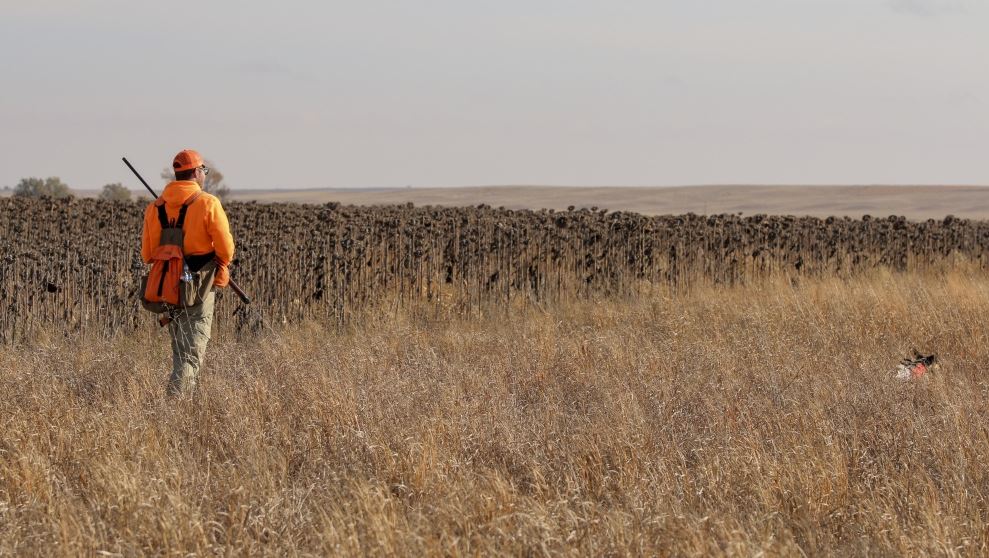
Hunters who can be nimble and watch the weather should make a trip to Kansas when the weather is cold and snowy, which concentrates birds into thicker cover. Otherwise, areas where food and roosting cover intersect are always good.
One thing hunters should note: There’s been a fair amount of hunting pressure in Kansas, given pheasant numbers in the Dakotas, and quail numbers in Oklahoma and Texas, generally are down. “We’re getting a lot of people who normally go other places,” Prendergast said.
Fortunately there are good numbers of birds, and plenty of
places to hunt.
The pheasant season in Kansas runs through Jan. 31, 2018, and the daily bag limit is a generous 4 roosters.
Joe Albert
MINNESOTA: MIXED RESULTS, WITH HARD WORK PAYING OFF
It’s not a year for the casual pheasant hunter in Minnesota. Anecdotally, results are mixed. But there is enough fair to good news in there to make things interesting for the hunter eager and willing enough to keep going.
“Yes it’s been a mixed bag” reports Nicole Davros, Wildlife Research Scientist with the Minnesota Department of Natural Resources (DNR) Farmland Wildlife Group in Madelia. “A few folks have found the hunting disappointing. Others are very happy. Then there’s that middle ground where most hunters fall – some good days, some bad days.”
Standing corn hampered hunters early on. That may well benefit the late-season hunter. “All that corn certainly helped some birds evade hunters the first few weeks of the season,” says Davros. “Once the corn came out, the better hunting reports started coming in.”
“It was funny, but birds seemed to get into their winter cover early this year,” says Davros. “A cold and windy first part of November probably caused that. Some birds were tough to get at with all the standing water.”
“As the wetlands freeze up,” predicts Davros, “there should be access to some birds for the hunter willing to work and hoof it.”
“That’s a common theme among the successful hunters this year – some miles and hard work,” says Davros. “There are fair to good days, and poor ones. Hunters who keep going are getting birds.”
“The south-central are of the state was one with an uptick in birds from our August roadside counts,” says Davros. “Hunting should have been better there. But success doesn’t seem as good as we had hoped in this region.”
“On the other hand,” she says, “that southwestern core area, along with west-central Minnesota, has produced a little better than expected.” The upper Minnesota River valley has birds, and plenty of access, with decent results coming out of the west-central counties.
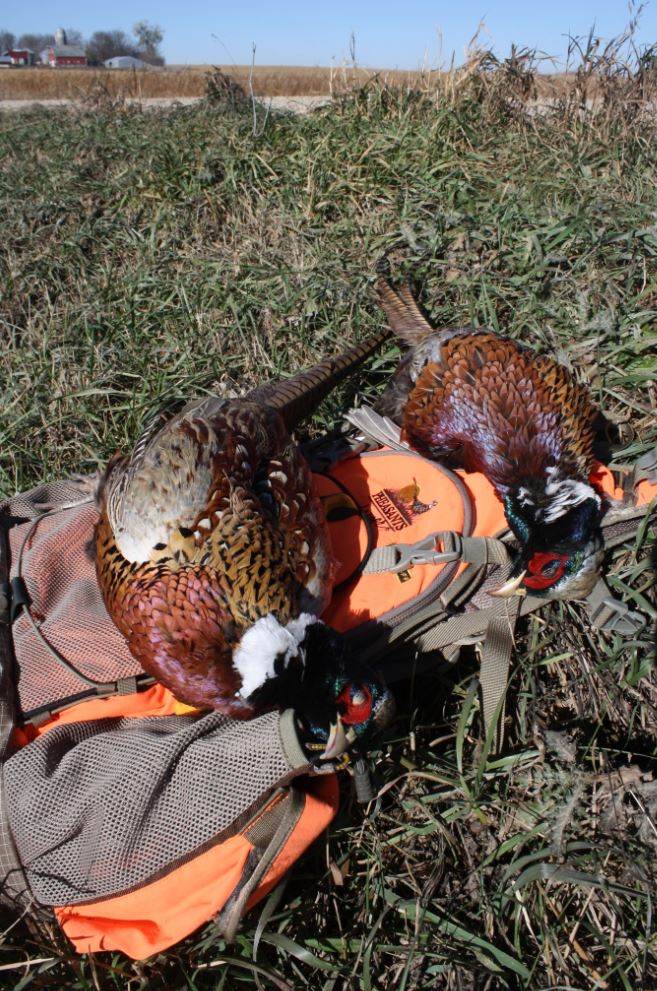
As a small silver lining: Davros has been hearing of good hen counts in the flushes hunters are getting.
It seems like some hunters were faint of heart this year, scared away by the low roadside counts. “We had just over 65,000 pheasant stamps sold as of just before Thanksgiving,” says Davros. “We always get some more hunters over that holiday, and in December too. But I don’t think we’ll hit the 74,000 pheasant hunters that we had in 2014, the lowest year we’ve had for pheasant stamp sales.”
Some late season advice?
“Look for an area with a complex or cluster of areas – WMAs, WPAs, WIAs – with a lot of grass, and those cattail wetlands now,” says Davros. “The birds need winter cover, and cattails are it,” along with shrubs and brush.
“Then get into those tough-to-reach spots,” she advises, “Don’t do what everybody else does. Figure out a different approach. Get to the back side of the property.”
“Oh, and maybe take the kids,” she laughs, “Send them into those cattails with the dog.”
“Don’t give up on the season,” concludes Davros. “The late corn harvest left us a few more roosters out there than we’d otherwise have now. It’s getting to be winter. You know where they are – the tough stuff. Pick a good sunny day and get out.”
Minnesota’s pheasant season remains open through January 1, 2018, and the limit increased to 3 roosters per day on December 1.
Tom Carpenter
MONTANA: IMPACTS OF DROUGHT APPARENT IN MANY PARTS OF STATE
If you’re talking about pheasant hunting in Montana this year, it’s impossible to not also talk about Mother Nature. While she spared some parts of the Big Sky State, across wide swaths of the eastern portion she withheld rain for more than three years, with severe impacts to upland birds.
“Overall, it hasn’t been a good year for us,” said Chad Harvey, the regional representative for Pheasants Forever in Montana. “Most of the state went through a 100-year drought. Bird numbers overall are down in the state.”
That’s particularly true in Regions 6 and 7 in the eastern portion of the state. In Region 4, which occupies the central and north-central part of the state, the picture is a little brighter.
“Compared to previous years, it’s been pretty quiet,” said Jake Doggett, upland game bird habitat specialist in Region 4 for Montana Fish, Wildlife & Parks. When the phone aren’t ringing, “I take that as a sign that hunters are generally satisfied with their experience,” he says.
But that isn’t the case in the eastern portion of Montana. While the spring hatch generally was good, the dry conditions through the summer negatively affected young bird survival, Harvey said.
“I hunted quite a bit the first week and a half of the season, but I realized pretty quickly the birds weren’t doing that great,” he said. “Since then I’ve been taking it easy.”
Still, there are birds to be had for hunters who aren’t afraid to work.
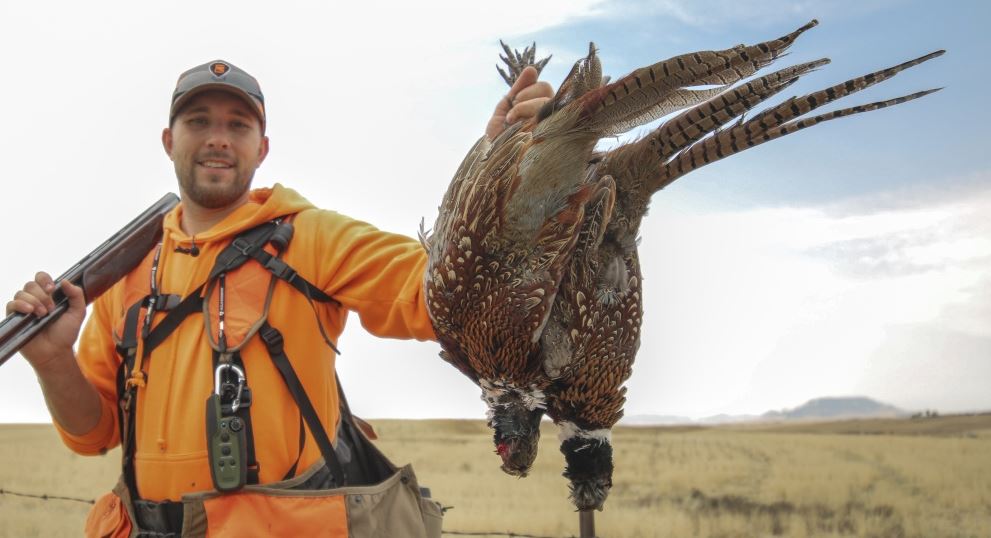
“Look for any places that hold water year-round – creek and river bottoms and areas around lakes,” Harvey said. “Those seem to be the only areas that held out OK.”
Farther west, Doggett offers much the same insight.
“If you can identify areas with CRP, you’re in the right spot,” he said. “And if you can, target the creek bottoms that support woody vegetation. Otherwise, find wildlife-friendly shelterbelts, or wetlands with cattails. I think the birds have moved toward winter cover by this time of year.”
The pheasant season in Montana ends January 1, 2018, and the daily limit is three cocks.
Joe Albert
NEBRASKA: SOLID HUNTING, WITH SOME SURPRISES
When it comes to hunting success, it’s highly unusual for all reports to mirror one another. Rather, success is often “varied,” and that’s the word Jeff Lusk, upland game program manager with the Nebraska Game and Parks Commission, uses to describe the pheasant season thus far in the Cornhusker State.
But he quickly notes one part of the state that perhaps has taken people by surprise: the Northeast and Southeast regions, where the pheasant abundance as judged by July Rural Mail Carrier surveys showed 6 and 11 percent declines from last year, respectively.
“The out-of-state hunters I’ve talked to have been surprised they’ve seen so many pheasants, especially in the more eastern parts of the state,” he said.
Hunting success has been about what Lusk expected in the southwestern part of the state, where mail carrier counts also were down from 2016 but were on par with the five-year average. The southwest, in particular, has an abundance of public land and draws many hunters. In addition to the Panhandle Region in western Nebraska, the Southwest Region this year and last has offered the best pheasant hunting opportunities, Lusk said.
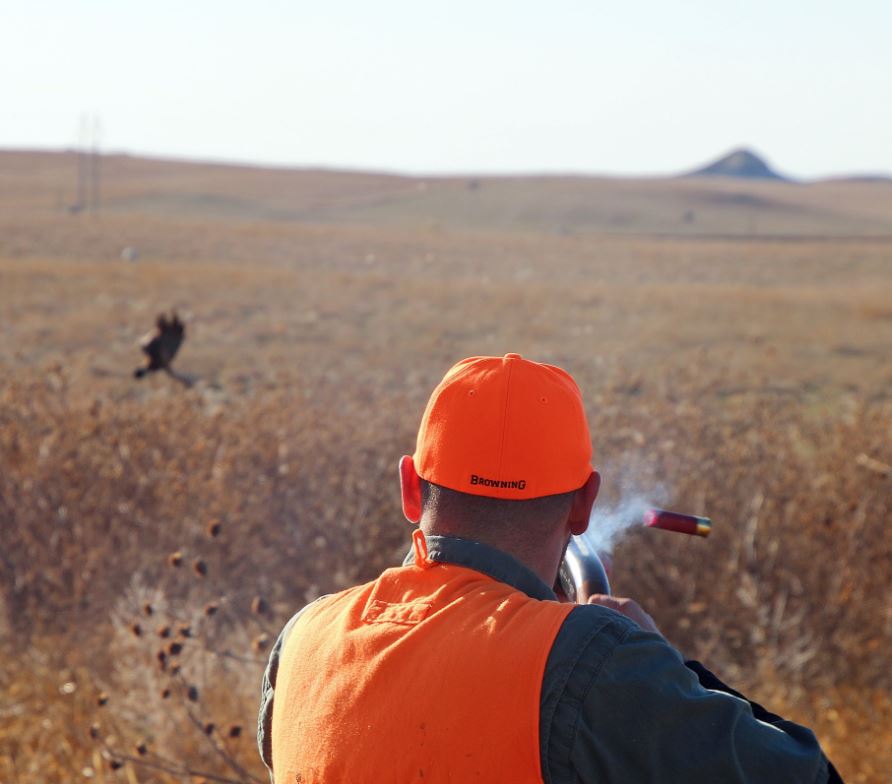
Statewide, pheasant numbers have improved in recent years, affording hunters more flushes and shooting opportunities.
“Pheasant numbers were at all-time lows after the drought and they seem to have rebounded,” Lusk said. “We’re happy with the rebound.”
Generally speaking, field borders next to crop fields afford the best late-season hunting in Nebraska. But the winter weather so far has been mild, so that may not be as true this year.
Now’s a good time to travel to Nebraska because most of the pressure directed at pheasants already has occurred.
“Most of the hunting occurs during the first month of the season. With the reduction in (the number of hunters afield), the birds will be less fearful,” Lusk said. “They will start getting back to their normal behaviors.”
The pheasant season in Nebraska runs through January 31, 2018, and the daily limit is three roosters.
Joe Albert
NORTH DAKOTA: ABOUT AS PREDICTED, WITH SOME SUCCESS
“Pheasant hunting in North Dakota has been about what we expected,” says R.J. Gross Jr., Upland Game Biologist with the North Dakota Game and Fish Department. “We were down 60 percent in our survey counts, and from anecdotal reports it seems that hunters are reporting seeing about 60 percent fewer birds.”
“Nobody’s too upset because people were prepared for this kind of a season,” he continues. “When you have a bad drought like we did over much of our pheasant range, there is going to be an effect. Hunters are seeing it.”
Still, there are birds on the landscape for folks willing to put in some miles and commit to some work. Here’s a typical example. One group I know that traditionally gathers in Hettinger County hunted as usual this season, in early November. Ten hunters over three days shot 48 birds – or just over 1.5 birds per hunter per day.
Some areas are providing better hunting than others. “The south shores of Lake Sakakawea, and the areas south of there, have seemed to be productive,” says Gross. “Birds are doing pretty good there.”
“The Regent area has also seemed strong compared to other areas, according to reports,” he adds.
“But some of our traditionally best pheasant areas are hurting,” he says. This would be southwestern North Dakota. “That’s where the drought hit the hardest and habitat was most degraded.”
Any encouraging developments or silver linings? “Hunters are reporting seeing good numbers of hens, when they do see birds,” says Gross. “That’s good news. You need hens to make new pheasants next year. One rooster can do a lot of breeding. You need hens on the landscape if we’re going to bring pheasants back.”
Normal rainfall will help too.
Tips for the rest of the season? “Just find the best habitat,” advises Gross. “It’s as simple as that. Don’t waste your time on marginal cover. Birds are moving to winter habitat. That means cattail sloughs. Cedar tree rows and brush rows are prime too. Stay close to food sources.”
“Public land birds have seen the song and dance,” Gross concludes. “You’ll need to work. Wildlife Management Areas with food plots should produce. Also, head to Waterfowl Production Areas with lots of cattails.”
North Dakota’s pheasant season remains open through January 7, 2018. The daily limit is 3 roosters.
Tom Carpenter
SOUTH DAKOTA: HUNTING IMPROVING AS SEASON GOES
It seems the gloom-and-doom predictions about South Dakota’s pheasant season prospects were a little too dark. While there is absolutely no doubt there are fewer birds on the landscape due to drought, some emergency haying, CRP loss and a rough nesting season in some regions, it’s also true that hunters willing to work are getting birds.
“The numbers say what they say,” says Chris Hull, communications specialist for South Dakota Game, Fish and Parks, “but reports from the field are telling a somewhat better story.”
“The season started with horrible weather for the resident opener,” says Hull, “then as the general opener came, a lot of corn was still standing. I think more pheasants than usual survived through for mid- and late-season hunters.”
Matt Morlock, Pheasants Forever’s State Coordinator for South Dakota, agrees. “We’re pleasantly surprised with what we’re seeing out there for birds now.”
“Another glimmer of good news is the number of hens hunters are seeing,” adds Morlock. “That’s good.”
“People found more birds than they thought they would as the season progressed,” Hull says, “and as corn came off, I think access to the birds, and hunting, improved. And most of the corn is gone now with the dry and mild weather we’ve had.”
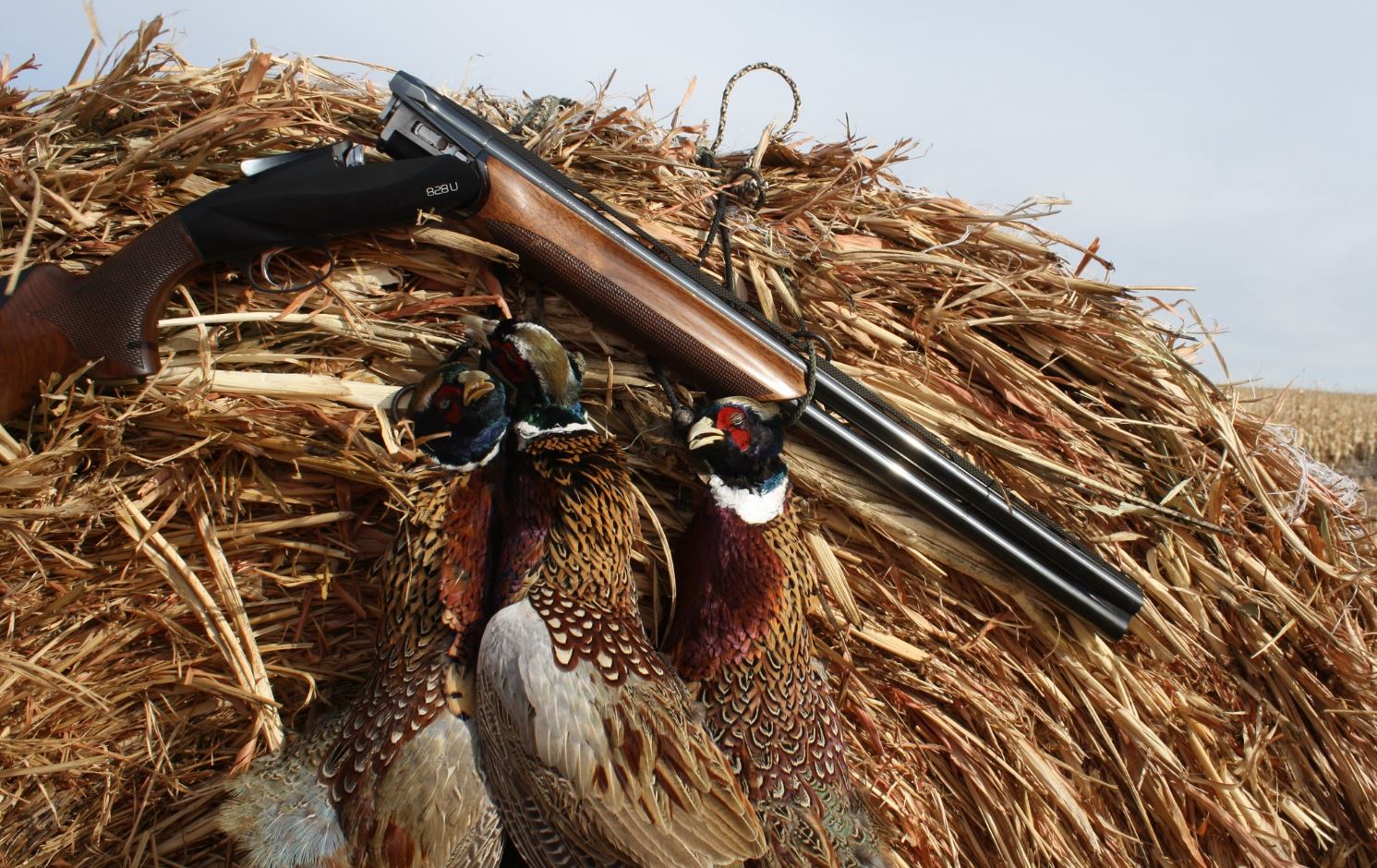
Late season prospects look decent for a couple reasons. One is the corn that is gone. Two is the lack of appreciable snow on the landscape for the time being; access on the back roads is fine. Three, according to Hull, “is the frigid high-pressure sitting on the Great Plains right now, freezing up cattail sloughs and other wetlands –places nobody has been able to hunt.”
“The birds are getting concentrated in winter habitat,” Hull says. “The colder it gets now, hopefully without lots of snow, the better hunting is going to get. Even if bird numbers were down somewhat in an area, the remaining birds are going to be grouped up.”
“I think we’ll end up with about 70,000 nonresident pheasant hunters in South Dakota this year,” says Hull. “That’s about 10% down from last year. Less pressure should result in a few more birds around to hunt now.”
Where to go?
“The James River Valley from Aberdeen on down is providing solid hunting,” says Morlock. “Yes, some of the traditional areas in the state are struggling. But everywhere there are pockets of good news about bird numbers.”
“That area south and west of Pierre seems fair to good,” adds Hull. “This is that fringe pheasant country with a lot more grass and cattle than crops, and a place not traditionally thought of as much as a pheasant hotbed. Birds are out there.”
Morlock provides a good tip for the late-season hunter making a run to South Dakota:
“Small hunting groups are doing better,” he says. “I had one group of 12 come for a weekend and shoot 3 birds. The next weekend they came back to the same area and broke up into small groups of 3 to 4. They shot 30 birds for the weekend.”
A more stealthful approach plus covering more ground. Seems like a good plan for a year when birds aren’t around every corner but still out there somewhere. This also might be a decent time for a solo hunter and his dog to have some ground to themselves.
South Dakota’s pheasant season remains open through January 7, 2018. The daily limit is 3 roosters.
Tom Carpenter